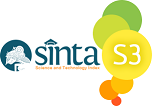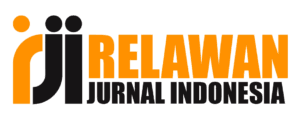Analysis Of Lead Level In Fish As a Water Bioindicator
DOI:
https://doi.org/10.31851/sainmatika.v17i2.5053Keywords:
Lead, Toxic, Water PollutionAbstract
Cork Fish (Channa striata) and Baung Fish (Mystus)is a fish that has a high nutritional value and many produced from the Musi City Palembang River. Activities in the region can produce waste that can harm water environment such as industrial waste and domestic household waste. This research aims to determine the level of heavy metals lead (Pb) in Cork fish (Channa striata) and Baung Fish (Mystus) originating from the Musi city of the river Palembang. Random sampling method on fish suppliers in the traditional market of Palembang by using the method of atomic absorption spetrophotometry. Based on the results of measurements made, heavy metal content of Pb Cork fish meat average of 0.1036 mg/kg and on average Baung fish meat 0.1425.As for the gills of the cork, the rate of Thymbalnya ranges between 0,0911-0,0953 mg/kg and in the gills of the fish range between 0,1117-0,1843 mg/kg. There are heavy metal contaminants in the meat as well as the fish Cork (Channa striata) and Ikan Baung (Mystus) derived from the waters of the Musi River that is the city of Palembang where the heavy metal levels lead to the fish is higher compared with fish meat.
References
Badan Lingkungan Hidup Kota Palembang. (2013). Laporan Analisis Kualitas Air Sungai dan Anak Sungai di dalam Wilayah Kota Palembang Tahun,2013.
Badan Lingkungan Hidup Provinsi Jawa Tengah. (2010). Laporan Kualitas Perairan Provinsi Jawa Tengah tahun 2001 sampai dengan 2010, Semarang.
Connel, D. W and Miller, G. J. (1995). Kimia dan ekotoksikologi pencemaran. Jakarta: Penerbit Universitas Indonesia.
Darmono. (1995). Logam dalam Sistem Biologi Makhluk Hidup. Cetakan I. Jakarta: Universitas Indonesia.
Darmono. (2006). Lingkungan hidup dan pencemaran: hubungannya dengan toksikologi senyawa logam. Jakarta: UI Press.
De Roos, F. J. (2003). Smelters and metal reclaimers. Occupational, Industrial, and Environmental Toxicology 2nd ed Philadelphia: Mosby, 388-97.
Emilia, I., Suheryanto, S., Hanafiah, Z. (2013). Distribusi Logam kadmium dalam air dan sedimen di Sungai Musi kota Palembang. Jurnal penelitian sains. 16, 2C.
Hananingtyas, I. (2017). Studi Pencemaran Kandungan Logam Berat Timbal (Pb) dan Kadmium (Cd) pada Ikan Tongkol (Euthynnus sp.) di Pantai Utara Jawa, Jurnal Biotropic. Vol.1:41-50.
Mukono, H. J. (2005). Toksikologi Lingkungan. Surabaya: Airlangga University Press.
Palar, H. (1994). Pencemaran dan Toksikologi Logam Berat. Jakarta: PT Rineka Cipta.
Palar, H. (2008). Pencemaran dan Toksikologi Logam Berat. Jakarta: PT Rineka Cipta.
Palar, H. (2012). Pencemaran dan toksikologi logam berat. Jakarta: PT Rineka Cipta.
Peter, O Neils. (1994). Environmental Chemistry, Second edition, Chapman & Hall London, Journal Chemical education. 268.
Poesponegoro, M. D., Notosusanto, N. (2005). Sejarah Nasional Indonesia II. Edisi Pemutakhiran. Jakarta:Balai Pusaka.
Purnomo. (2014). Koefisien Korelasi Cramer dan Koefisien PHI Serta penerapannya. Yogyakarta: Universitas Negeri Yogyakarta.
Robbins. (1995). Buku Ajar Patologi I. Jakarta: EGC.
Setiawan, A. A., Emilia, I., Suheryanto, S. (2013). Kandungan Merkuri Total pada berbagai jenis ikan Cat fish di perairan Sungai Musi Kota Palembang. Jurnal Seminar Nasional Sains dan Teknologi V Lembaga Penelitian Universitas Lampung.
Sodik, D. M. (2014). Hukum Laut Internasional dan Pengaturannya di Indonesia. Jakarta: Rafika Aditiam.
Trisnaini, I., Kumalasari, T. N., Utama, F. (2018). Identifikasi Habitat Fisik Sungai dan Keberagaman Biotilik Sebagai Indikator Pencemaran Air Sungai Musi Kota Palembang. Jurnal Kesehatan Lingkungan Indonesia. Vol.17:1-8.
Yalcin, M. G., Narin, N., Soylak, M. (2008). Multivariate Analysis of Heavy Metal Contents of Sediments From Gumusler Creek, Nigde. Turkey. Environmental Geology. Vol. 54:1155-1163.








